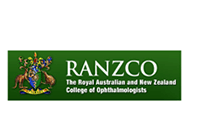Chalazion
A chalazion is a painless inflammation characterised by a lump or nodule formed on the upper or lower eyelid. A chalazion is non-communicable and usually does not affect vision, but a large lump can put pressure on the eye. Chalazion is commonly seen in adults 30 to 50 years of age, and also in children.
Symptoms
A chalazion may look similar to a sty, which is a painful red lump that occurs as a result of infection of the eyelid glands. Chalazion manifests as a painless, red, tender bump on the eyelid and causes excess tearing. It starts out very small, but can soon grow into a bump the size of a pea. Chalazion may cause blurred vision, due to pressure exerted on the eye by a large chalazion. Very rarely, they may indicate an infection or skin cancer.
Causes
A chalazion is caused due to a gland (the meibomian gland) present in the lining of the eyelids, which lubricates the eye surface. Blockage of these glands may result in the accumulation of oil in the gland until it eventually breaks open, releasing the oil into the neighbouring tissue. This is what causes the inflammation.
Certain factors increase the risk of developing a chalazion. These may include
- Chronic blepharitis (inflammation of the eyelids or eye lashes)
- Acne rosacea (redness due to blockage of blood vessels on the face)
- Seborrhoea (overactive sebaceous glands causing oily skin)
- Tuberculosis
- Viral infection
Diagnosis
The diagnosis of a chalazion is based on medical history and the physical examination of the eyes as well as eyelid margins.
Treatment
Most chalazia may subside without the need for any treatment in a few weeks to a month, but they often reoccur. Treatment is the same as for a sty, which includes regular application of warm and wet compressions on your child’s eyes for about 15 minutes throughout the day. Topical antibiotic medication may also be prescribed for the eye. Children will be advised to maintain eye hygiene by regularly washing their hands and rinsing their eyes with warm water. Children are instructed not to rub or squeeze the affected area of the eye. When symptoms do not improve, surgical removal of the chalazion may be recommended.







